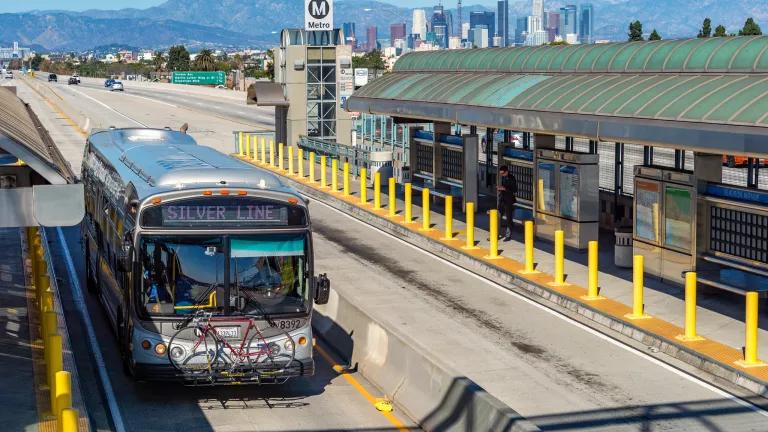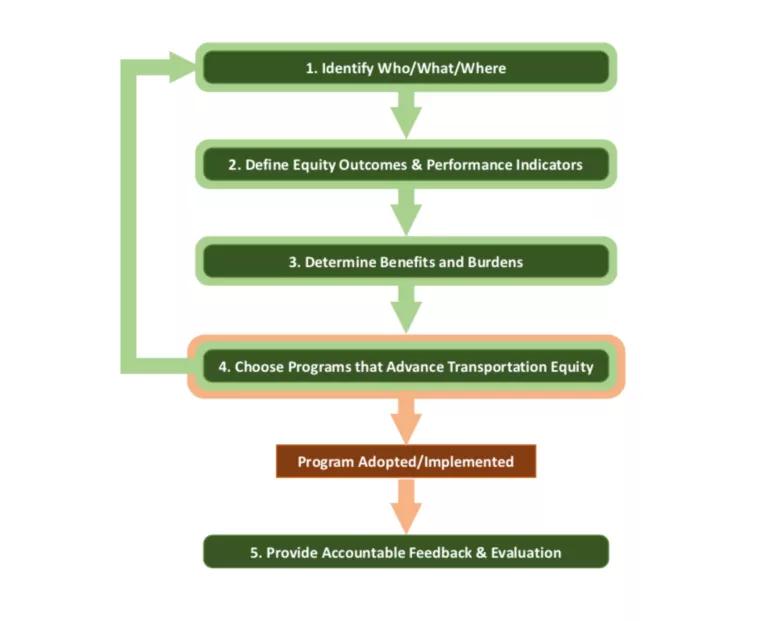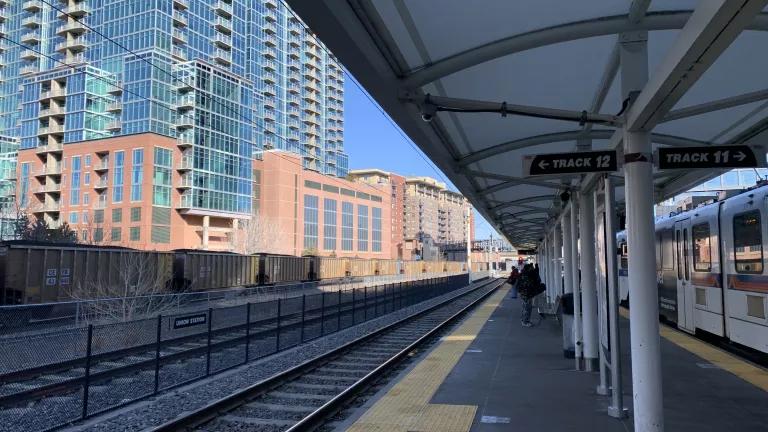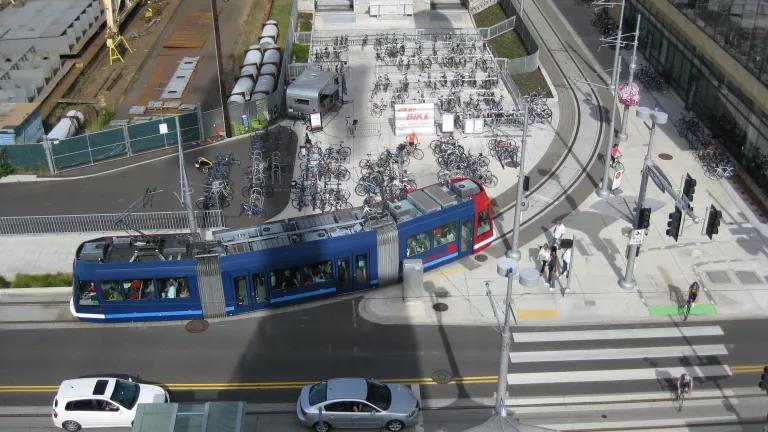Road Pricing Can Fix Traffic and Inequities

New report from TransForm and NRDC puts equity at the center of the congestion pricing conversation.
What do clogged roads, polluted air, slow transit and dangerous streets add up to in cities around the country? A transportation sector that makes up the leading source of greenhouse gas emissions in the United States.
Take Los Angeles: Each year Angelenos stagger through congestion that saps an extra 100 hours on average. At the same time, crowded buses slog through a morass of single occupant cars. That means less time with families, fewer hours for business owners on service calls, and daycare late fees for busy parents.
How can we make the system more equitable and efficient in L.A. and other busy cities? Several cities have used prices to manage congestion and reinvest in community mobility and health. By charging the lowest possible fee to convince enough drivers to avoid a discretionary trip in their car at rush hour, we can make the transportation system work better for everyone.
Indeed, last week the Los Angeles County Metropolitan Transportation Authority (Metro) took up discussion of congestion pricing as a tool to tame traffic and accelerate 28 transportation projects before the 2028 L.A. Olympics. The main takeaway was that Metro staff should move forward only if improving equity is the centerpiece of congestion pricing.
A new report and toolkit from transportation equity advocates, TransForm, produced with support from NRDC and William and Flora Hewlett Foundation, points the way for Metro and a dozen other U.S. cities.
Pricing Roads, Advancing Equity pulls together best practices and case studies to help cities and transportation agencies evaluate the social equity—or in most cases, inequity—of their transportation systems. And then it offers guidance on how the use of congestion pricing and reinvesting in mobility can improve social equity in transportation.
Most notably, London and Stockholm ramped up new public transit service and then implemented a fee on cars driving into the city center at the busiest time of day. The results? Traffic dropped 20% in London, emissions fell over 10% and childhood asthma plummeted.
Could that work in America’s more car-dependent cities? A key question is how can we design such a system in a way that enhances social equity and provides better mobility for those who are burdened by our status quo.
The accompanying toolkit then offers a thoughtful process for advocates agencies to think carefully about who could benefit or be harmed, how to measure positive or negative effects, and then select approaches that maximize benefits and reduce harms for vulnerable communities.

Strategies include offering discounts to low-income drivers and exemptions to persons with disabilities, and then investing revenue in free or reduced-price transit and walking and biking infrastructure.
As worsening traffic congestion, rising climate emissions, and growth in urban areas confound communities across the country, we know city leaders will turn more and more to congestion pricing as a powerful and proven solution. It’s essential that they not only think about equity implications, but make improving equity an explicit project goal and put fairness at the center of program design.
With this new resource, we’re confident many more cities can move forward with pricing in their toolkit for unclogging our streets, cleaning our air and enhancing mobility for those who need it most.
California State Assemblymember Richard Bloom, who represents the congested Westside of L.A. County, put it this way: “My constituents spend over 100 hours a year stuck in traffic. That’s why I’ve been exploring Go Zones as a solution for traffic hotspots. This timely report helps ensure that any pricing pilot that moves forward starts with a commitment to improve social equity and create more transportation choices for those who need them the most.”




